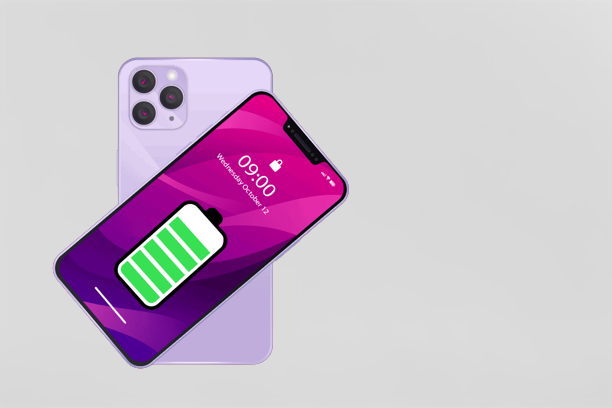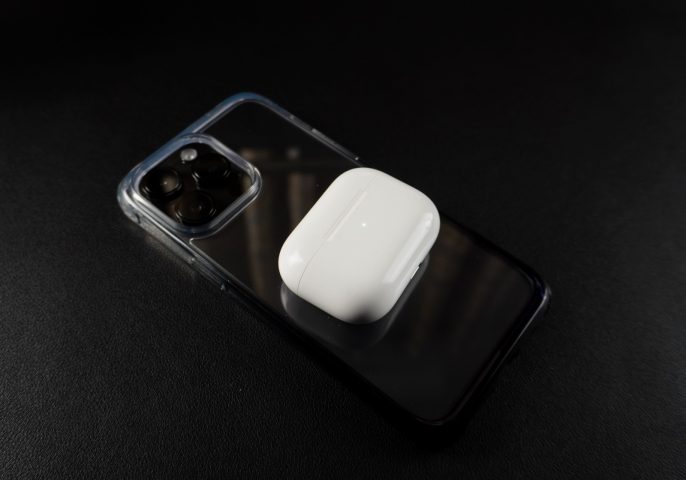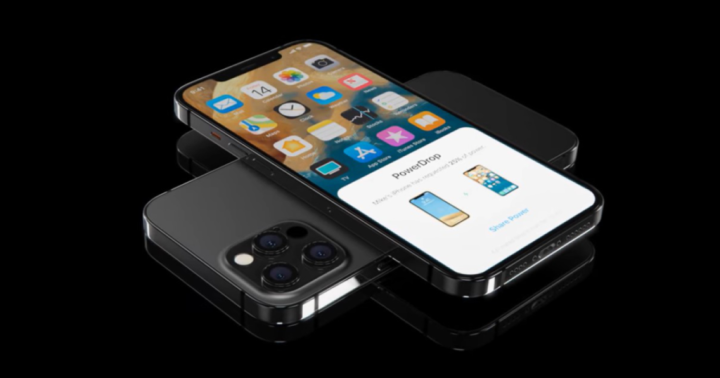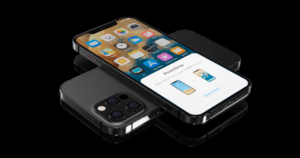In today’s hyper-connected world, our iPhones have become our lifelines, keeping us connected with friends, family, and the digital universe. However, the more we rely on these sleek devices, the quicker their batteries seem to drain. That’s where the concept of “power sharing /Powerdrop on the iPhone” comes into play, promising to be a game-changer in the world of mobile technology. This can share battery from your iPhone. Imagine a scenario where you’re out and about and your friend’s phone is on the brink of death. You whip out your trusty iPhone and effortlessly transfer some of your precious battery juice to their device, saving the day. Ensuring your group’s communication remains intact. Sounds like science fiction? Well, it’s not!
In this guide, we’ll delve into the exciting realm of power-sharing using your iPhone, a feature designed to make our lives more convenient and connected. We’ll explore the step-by-step process, compatible devices. Even some nifty tips and tricks to maximize the potential of this cutting-edge feature. So, if you’ve ever wondered how to share battery power seamlessly from one iPhone to another, stick around. We’re about to unlock the power of sharing and revolutionize the way we stay charged in our fast-paced world.
What you will see here?
What is power sharing/Power–Drop on the iPhone?

Power sharing or Power-Drop, also known as wireless charging and battery sharing, is a groundbreaking feature introduced by Apple in recent iPhone models. It allows users to share power wirelessly between two compatible devices. Essentially, it transforms your iPhone into a portable charger that can replenish the battery of another device, such as another iPhone, AirPods, or even an Apple Watch.
Unlocking a hidden superpower on your iPhone, the power-sharing feature in iOS 14 transforms your device into a battery-sharing wizard. Instead of tethering your phone to a power bank or charger, it empowers you to recharge your iPhone using your friend’s device. This incredible capability is also known as the ‘Reverse Charging’ feature, turning your iPhone into a friendly battery lifeline.
How does power-sharing/PowerDrop work?
Unlock the Wireless Magic: Compatibility is the name of the game when it comes to iPhone power-sharing. Both your iPhone and the device you wish to juice up wirelessly must be on the same technological wavelength.
Summoning the Power: To wield the power-sharing prowess of your iPhone, ensure it’s fully charged and ready for action. Then, follow these mystical steps:
- Lay your iPhone, charged side down, on a flat surface.
- Let your iPhone establish a magical connection with the other device, usually through the power of magnets and NFC.
- Keep an eye out for a mesmerizing animation or a notification signaling that the power-sharing enchantment is now in progress.
Charging Sorcery: Once the power-sharing spell is active, your iPhone will conjure wireless energy to charge the compatible device resting on its back. It could be another iPhone, AirPods nestled in a wireless charging cocoon, or any other Qi-compatible artifact.
The Watchful Eye: Keep watch over the mystical ritual by consulting the battery widget in the Today View or the Lock Screen. It will reveal the battery life of both your iPhone and the connected device, ensuring you’re always in the know.
Ending the Spell: To bring an end to this magical exchange, simply lift the connected device away from your iPhone or venture into the Settings app to disable the enchantment.
Remember, the availability and capabilities of this spellbinding power-sharing feature may shift with time, depending on the iPhone model and iOS version you possess. Newer iPhones and software updates might weave new spells or refine the old ones.
Compatible Devices and Requirements
The iPhone 14 surprisingly doesn’t support power-sharing despite having the necessary technology for reverse wireless charging. This intriguing omission leaves users of the iPhone 14 without the ability to wirelessly charge other Qi-compatible devices like the Apple Watch, AirPods, or fellow smartphones, a feature enjoyed by its predecessors like the iPhone 13 and iPhone 12 series.
This convenient capability allows you to place another device on the back of your iPhone, aligning the charging coils for a quick power boost. However, be mindful that power-sharing can slow down your iPhone’s charging rate. And the amount transferred depends on the battery levels of both devices. So, while the iPhone 14 boasts impressive technology, this feature remains untapped in this iteration.
How to enable power-sharing/power-drop?
- Check Compatibility: Ensure both iPhones can share, as this feature typically relies on specific battery capacities and hardware capabilities.
- Update iOS: Ensure that both iPhones operate on the latest iOS version, as software updates often introduce new features and enhancements.
- Activate Bluetooth and Wi-Fi: Activate Bluetooth and Wi-Fi on both iPhones, as these functionalities are frequently necessary for device-to-device communication.
- Establish a Connection: Position the two iPhones near each other to allow them to identify each other, provided they are compatible with power sharing.
- Access Power Sharing: If the power-sharing feature is accessible on your iPhone, locate it within the Control Center. To access the Control Center, swipe down from the upper-right corner of the screen (or swipe up from the bottom, depending on your iPhone model).
- Enable Power Sharing: Identify an icon or button representing power sharing, which might resemble a battery icon or feature a specific label. Tap on it to activate power sharing.
- Follow on-screen prompts: adhere to any on-screen cues or instructions to finalize the power-sharing process, potentially requiring confirmation on both devices.
- Charging: Once power sharing is activated, position the iPhone in need of charging (the recipient) near the iPhone with available battery power (the source). The recipient iPhone should commence wireless charging from the source iPhone.
How do I share power with another iPhone?
Follow the steps to transfer the battery:
- Make sure to have perfect compatibility with the iPhone running iOS 14 or later.
- Keep both iPhones together. Remember to enable Bluetooth.
- Go to Settings,, scroll down, and press “Battery“.
- To enable the sharing, tap “Battery Share“.
- Make sure that your device is listed as an available power source.
- Complete this step on both iPhones.
- You are on your way to sharing your battery life.
How to charge accessories

Here are the steps for charging accessories such as AirPods or an Apple Watch using your iPhone:
- Ensure that both your iPhone and the accessory are powered on.
- If your accessory has a wireless charging case, position the case with the status light facing upward in the center of your iPhone.
- If you have AirPods Pro (2nd generation), you can also place the case with the status light facing upward on the center of an Apple Watch wireless charger.
- In case your accessory lacks a wireless charging case, you can employ a Lightning-to-USB cable to link it to your iPhone
Safety Precautions in Power Sharing/PowerDrop in iPhone
- Make sure to power share with a trustworthy person; otherwise, it may give unauthorized access to your data.
- Make sure to make a proper connection so you don’t have to drain your own battery.
- If your phone overheats or is damaged, disconnect it at your first preference.
- Ensure that both iPhones are positioned close to each other and maintain a stable connection during power sharing.
- Power sharing is intended for short-term use to temporarily boost a friend’s battery.
- Avoid initiating power-sharing if the host device’s battery is already low, as it may not have enough charge to share effectively.
- Inspect both iPhones for any physical damage, including cracked screens or damaged ports, before initiating power sharing.
Battery-saving tips
- Activate Low Power Mode to conserve battery life. This mode eliminates power-hungry features like background app updates and automatic downloads. To enable Low Power Mode, navigate to Settings > Battery and switch on Low Power Mode.
- Deactivate Bluetooth and Wi-Fi when not in use, as they can rapidly deplete your battery, especially while searching for devices or networks.
- Dim the screen brightness to save the battery. The brighter your screen, the more energy it consumes. To reduce brightness, swipe up from the screen’s bottom and adjust the brightness slider.
- Close unused applications, as background-running apps can continue drawing power even when not actively used. To close an app, swipe up from the bottom of the screen. Hold until the app cards appear, and then swipe up on the app card to close it.
- Disable location services for apps that do not require them, as these services can significantly drain your battery, especially when running in the background. To deactivate location services for an app, go to Settings > Privacy > Location Services and switch off the app’s toggle.
- Terminate background app refresh, which allows apps to update themselves when not in use, consuming your battery. To disable this feature, go to Settings > General > Background App Refresh and toggle off the switch for unnecessary apps.
- Consider using a power bank if you anticipate being away from a power source for an extended period. A power bank can help you maintain your iPhone’s charge.
Troubleshooting in Power Sharing/PowerDrop iPhone
When grappling with connectivity issues between devices, a seamless tech experience is paramount. Firstly, ensure proper device connections. Inspect power cords and connectors for damage and consider trying different ones. Changing the connection location can also help. Slow charging can be resolved by confirming device compatibility, checking battery levels, and exploring alternative power sources or locations. For deeper troubleshooting, update the device firmware or reset to factory settings. Seek manufacturer support if needed. Factors like device distance, power consumption, and ambient temperature impact power sharing. Utilize power strips or surge protectors, keep devices away from heat sources, and maintain connector cleanliness for an improved experience.
Does power-sharing/PowerDrop work between Android and iOS or vice versa?
Nonetheless, there exists a significant constraint when it comes to distributing power between two distinct operating systems, although there are a few third-party applications that can address this issue. Generally speaking, facilitating power sharing between Android and iOS devices poses greater difficulties. Android and iOS employ separate power management protocols, and standardized approaches for power sharing between these platforms may be lacking. It’s improbable that you can directly link an Android device to an iOS device and share battery capacity without resorting to supplementary third-party hardware and software solutions, which might come with their own restrictions.
Is the power-sharing/Powerdrop feature available on any other phone apart from the iPhone?
Power sharing, also known as reverse wireless charging, was not exclusive to the iPhone. Several Android smartphones, including Samsung Galaxy and Huawei devices, also offer this feature. However, it’s important to note that the availability of features may change with newer phone models and software updates, so I recommend checking the latest specifications and reviews for specific phone models to confirm if they offer power sharing.
Conclusion
The Power Sharing /Power Drop feature on your iPhone emerges as a beacon of convenience and connectivity. As we’ve delved into the intricacies of this feature, it’s clear that the ability to share battery life transcends mere utility; it’s a testament to the power of collaboration in our interconnected lives. Imagine being able to lend a hand, or rather, a charge, to a friend in need without fussing over cables and adapters. The iPhone’s Power Sharing function embodies the essence of sharing in the digital age, making it not just a device but a symbol of empathy and camaraderie.
Furthermore, this feature highlights the relentless innovation of Apple, which pushes boundaries to enhance the user experience. As we embrace the future of tech, let’s remember that it’s not just about the gadgets themselves but how they enable us to forge deeper connections and bridge the gaps in our fast-paced lives. So, in the world of power-sharing iPhones, we don’t just see a device; we see a tool for forging stronger bonds and making our interconnected world a little brighter. Share your power, and in doing so, share a piece of yourself.
















